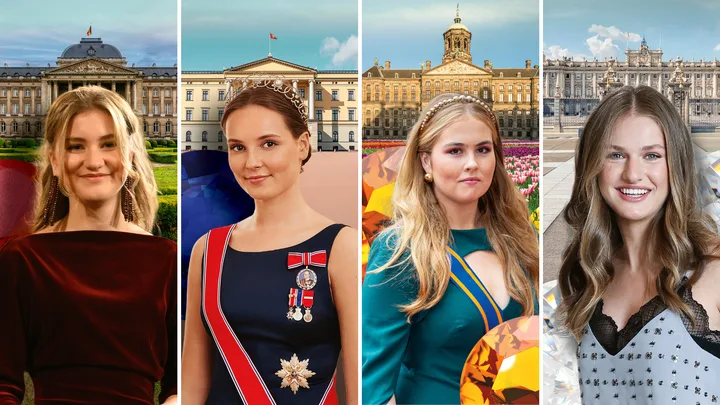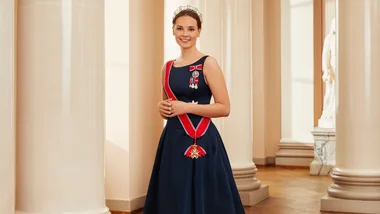It’s the most exclusive WhatsApp group on Earth. To get into it, you have to be young, you have to be female, and you have to be heir to the throne of a European kingdom. The members of this closely guarded chat are the Gen-Z princesses who will one day ascend to the head of their nations: Princess Elisabeth of Belgium, 23, Princess Ingrid Alexandra of Norway, 21, and Catharina-Amalia, Princess of Orange, heir to the throne of the Netherlands, 21. Princess Leonor of Spain, 19, may also be in the group. Meet the future Queens of Europe.
“I don’t know for sure,” European royal correspondent Wim Dehandschutter tells The Weekly. The Queen of Spain is very strict with her daughters, he explains, and because of this Leonor is less connected than the other three.
Using the encrypted app, these future queens in their early twenties talk about friendship, privacy, social media, and how to balance all these demands with the duties and obligations of preparing for life as regents. The Princess of Orange recently confided in Wim the importance of this safe space for future queens of Europe to share their thoughts and experiences.
“We stay in contact with each other because we are all living a very specific life and we don’t need much explanation to understand each other,” Her Royal Highness Catharina-Amalia told Wim.
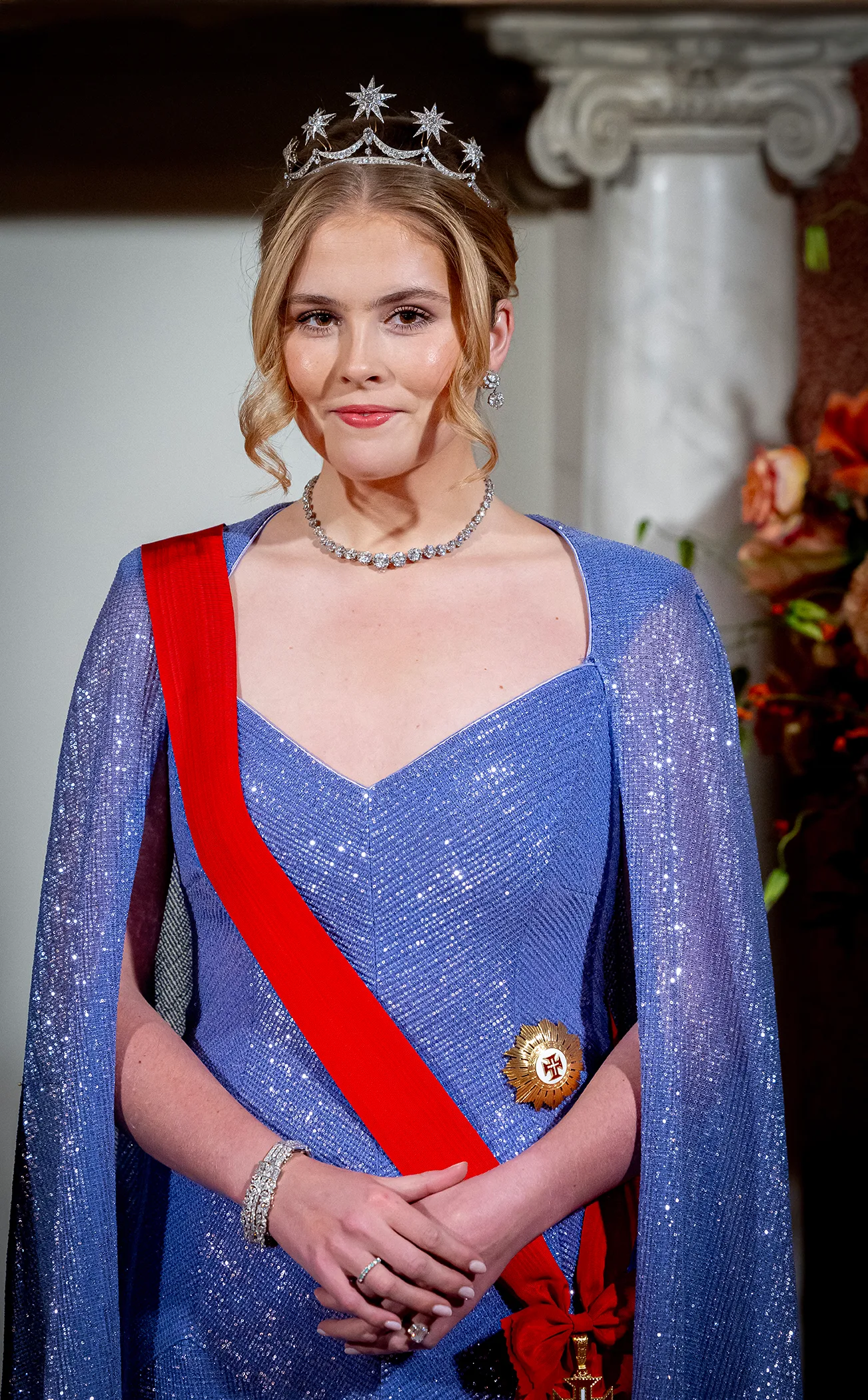
Queens of Europe confidants
“They are royal besties,” he tells us. Living in different countries makes it hard to foster true intimacy, but their unique station in life means they find understanding and trust in each other. They are a royal support network.
“Catharina-Amalia referred to privacy, for example,” Wim continues. “How do you handle privacy when you’re a public figure? How do you react when people want to become friends? Do they want to become friends because you are the future queen, or do they really like you?”
The young women each occupy a position that is uniquely privileged and precarious. They were educated at the finest institutions. All but Princess Ingrid attended UWC Atlantic, the boarding school in a 12th-century Welsh castle in the Vale of Glamorgan, where King Charles III studied.
They wear diamond tiaras to parties in palaces, are subject to tabloid scrutiny and worse. In 2022 Catharina-Amalia had to leave her student accommodation in Amsterdam after authorities intercepted organised crime communications that mentioned her name. She spent a year in Madrid amid fears she was the target of a kidnapping plot.
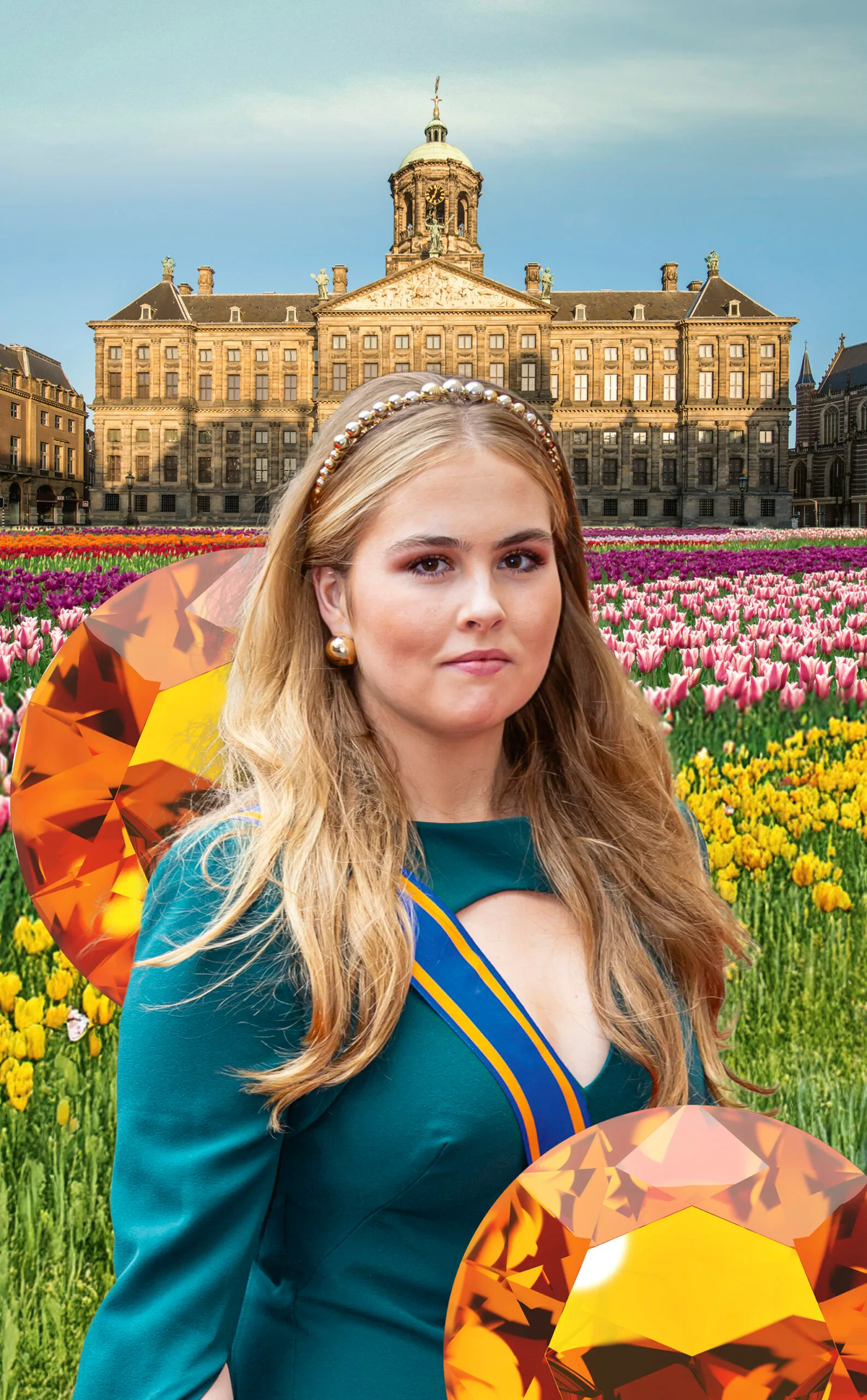
Inherited challenges
All four of the future queens of Europe will reign over symbolic monarchies, funded by taxpayers, in a climate where the relevance of royalty is increasingly questioned. Independence movements in Spain and Belgium generally do not want them. Last year, The Economist pondered why monarchies still exist. “Like the human appendix, their purpose today is unclear,” it said.
“There’s an evolution in the popularity of the monarchies,” says Wim, a close observer of European royals for two decades. “If there are scandals this has an effect on the popularity of the monarchy.”
And there has been no shortage of scandals. In the deeply Catholic nation of Spain, ex-King Juan Carlos badly damaged the crown’s reputation when his years-long affair with Danish businesswoman Corinna zu Sayn-Wittgenstein-Sayn was exposed on a luxury $100,000-a-night safari in Africa. A $107 million “gift” he gave her triggered an investigation into money laundering and tax evasion. Princess Leonor’s father, King Felipe VI, has worked hard to repair the royal family’s reputation, distancing himself from his father, who fled the country.
“In Spain, the monarchy isn’t that popular, but Leonor is very popular,” Wim says. When she turned 18, the country was gripped by Leonor-mania. “There was a lot of interest for her.”
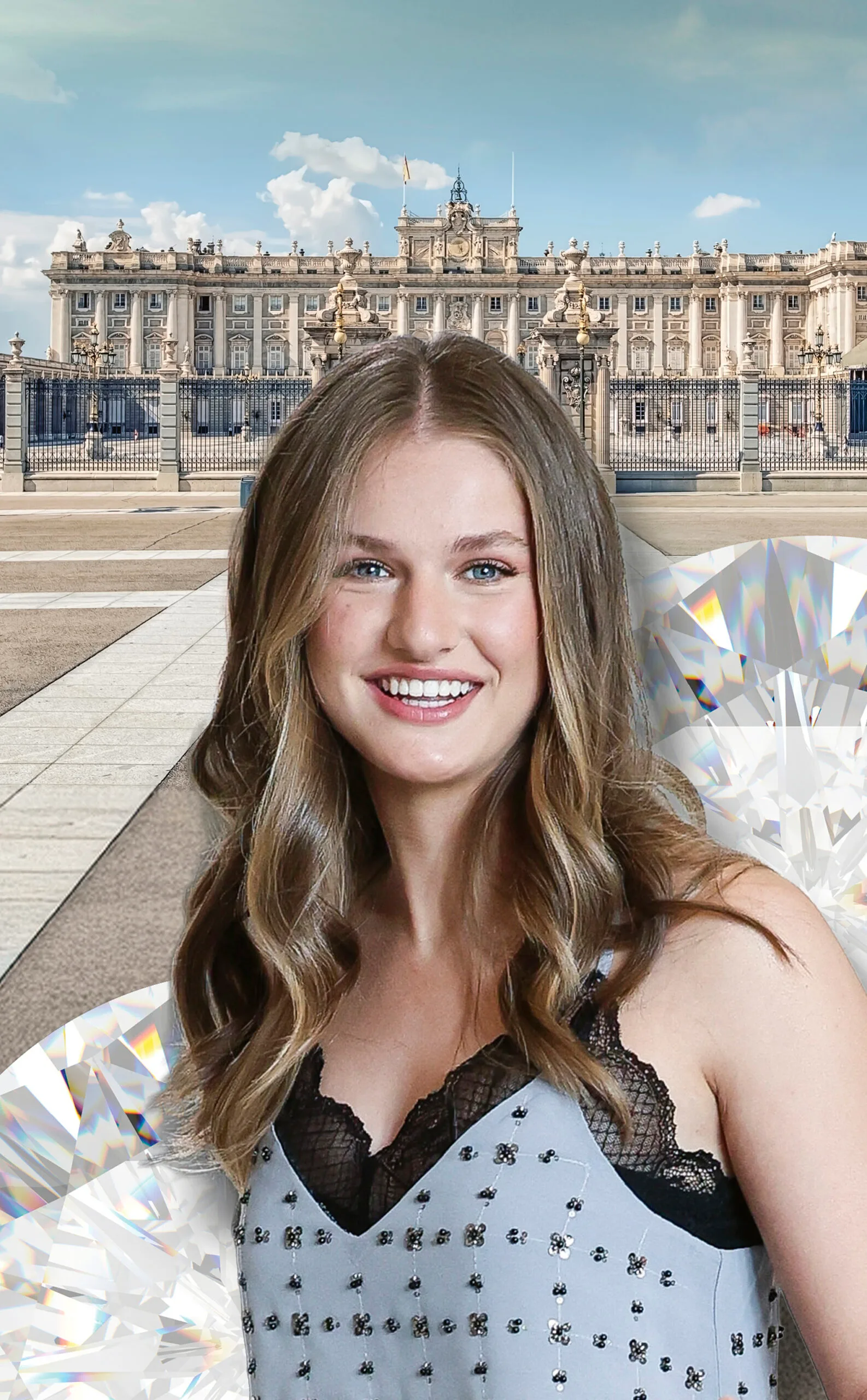
The popularity of the Norwegian royals plunged upon the marriage of the king’s daughter, Princess Märtha Louise, to a self-styled shaman she claims to have known in a previous life in Egypt. Belgium was unsettled by a public paternity battle which ultimately revealed the former King Albert II had fathered a child out of wedlock.
In the Netherlands, the generally-liked royals have raised ire in recent years with ill-considered holidays and parties during the pandemic.
“It often happened that there’s a newspaper or media organising a poll about: Do we still need a monarchy?” Wim says.
Next in line
It has already fallen to the young, clever princesses to help resurrect their nations’ love for the crown. As they are groomed for a life of service in the public eye, they are only too aware of the weight of expectation, Wim says. This is why the WhatsApp group is so important, he stresses. The eyes of Europe are upon them.
Last spring, the Belgian Palace eagerly shared photos of Princess Elisabeth, Duchess of Brabant, striding around the campus of Harvard, where she’s studying public policy. She smiled in wide-leg jeans and green sneakers with an armful of books.
“She’s said to be the X-factor of the Belgian monarchy,” Wim says.
Princess Elisabeth not only passed the gruelling Harvard admission exam, she was also selected for an honorary award in the prestigious Fulbright Program. She is bright and is fluent in French, German, English and, crucially, Dutch, “which is very important for the Flemish people,” Wim says.

Nation divided
“In Belgium the royal family isn’t that popular because you have the tensions between the Flemish-Dutch speaking part of the country and the French-speaking part. A lot of people want independence, and the royal family is one of the last institutions or ways to unite the country, so that makes the royal family – not controversial – but less popular.
“King Philippe isn’t that popular; people think he isn’t charismatic.”
When Philippe’s engagement to Mathilde was announced in 1999, Belgian newspaper De Standaard published this faint praise: “He will never be a star, but he has managed to steer away from the image of a slow, dry, old stick.” Queen Mathilde gave the monarchy an injection of charm which her daughter has galvanised.
“As well, she’s a very beautiful girl,” Wim says. Readers flock to stories about the heiress.
Queens in training
Because she is studying, Princess Elisabeth is not considered a working royal and so does not receive money from the state. When she completes her two years at Harvard, she will likely take a year off before beginning her duties. Her father went to India to work with Mother Teresa’s institute.
“Her parents will support her to take that sabbatical year because that time of her life is the last period that she can be anonymous,” says Wim. Some Belgian royal watchers, he says, believe Princess Elisabeth may rule as soon as 2030. Abdication has become increasingly common as ageing monarchs seek to keep the crown fresh and relevant, and, in the case of Princess Elisabeth’s grandfather, King Albert II, deflect any scandal.
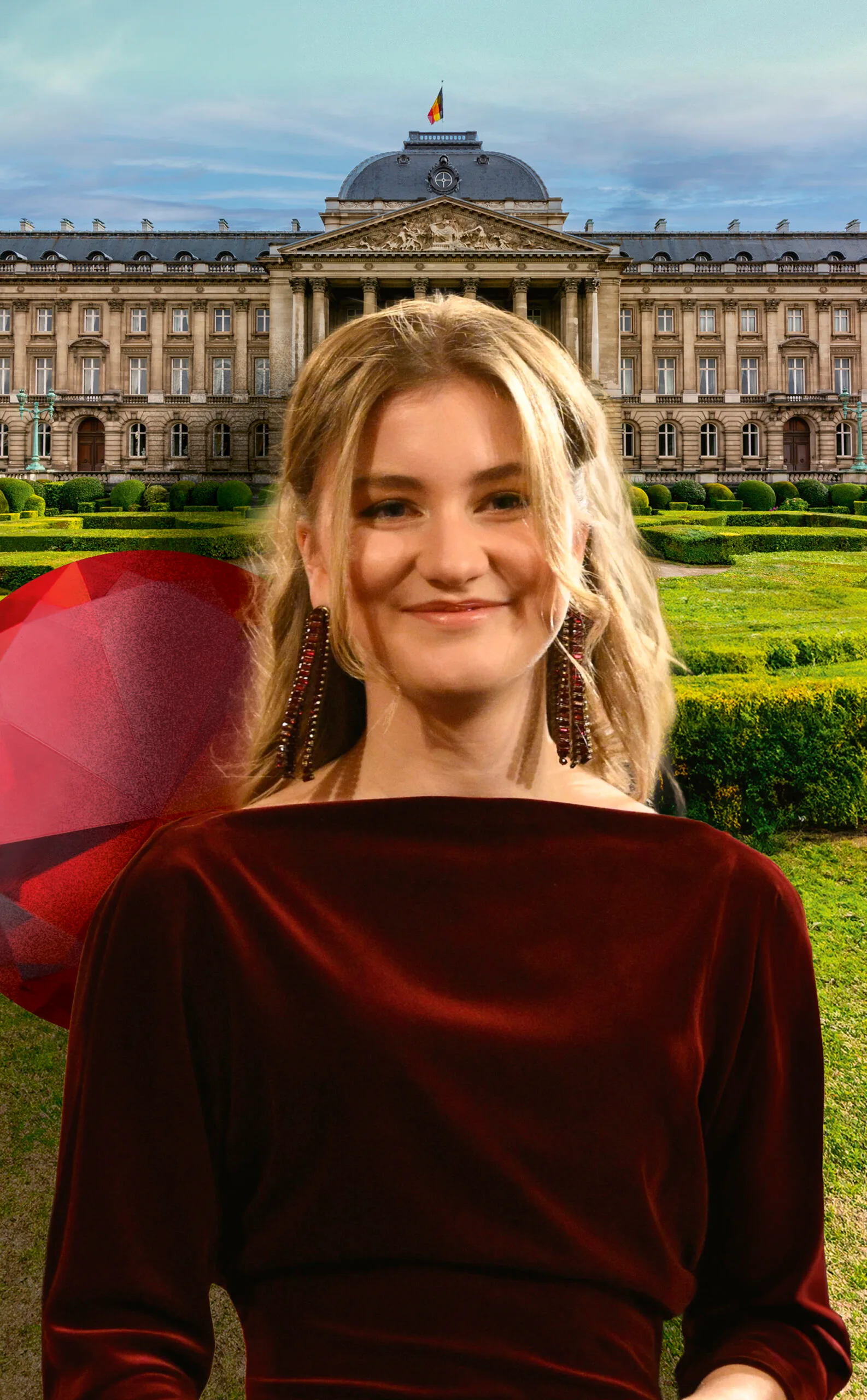
When he stepped down in 2013, the official reason given was ill health, but many believed a very public paternity dispute was partly to blame.
In 1999, an unauthorised biography of Queen Paola alleged King Albert II had a secret daughter, and the Belgian press quickly identified artist Delphine Boël as the likely secret princess. Delphine and her baroness mother refused to comment, despite them both understanding that King Albert II was Delphine’s father, and Delphine having a close friendship with the man she had called “papillon” (butterfly) since childhood.
In 2012, Delphine launched legal action seeking to be recognised as his daughter. “I became famous by shame. I was the dirty laundry of King Albert,” she told 60 Minutes Australia.
In a battle that dragged on for years, the king denied the connection. Albert, as king, was immune from prosecution, but he lost this protection when he abdicated. A DNA test proved he was Delphine’s father.
His son, King Philippe, put in place damage control measures. From 2015, only his direct descendants would be granted royal titles. “He didn’t want too many scandals because scandals mean bad publicity for the monarchy, and bad publicity means questions about ‘Do we need a monarchy or not?’” Wim explains.
Born to rule
Princess Ingrid’s grandfather, King Harald V, still reigns. Her father, Crown Prince Haakon Magnus, will serve as king before she takes power. She is presently completing her military service in the north of Norway and is an elite surfer, having won a national junior championship in 2020 at age 16. In August, she will move to Australia to study “international relations and political economy” at the University of Sydney, the palace said.

According to Wim, Ingrid is the least polished of the princesses. She’s been called “the badass princess” he says, because “all the others know how to behave as a crown princess, but she doesn’t care. That makes her a little bit atypical … She makes some strange remarks sometimes. She’s not shy.”
The Norwegian royals are offbeat in their own way. Princess Ingrid’s mother, Crown Princess Mette-Marit, was a controversial choice of bride when Prince Haakon married her in 2001. She had a child from a previous relationship, Marius Borg Høiby, now 28, and had been in a relationship with a man convicted of drug offences. In 2019 she was forced to apologise for socialising with Jeffrey Epstein after Epstein had already served 13 months in prison for paying an under-age woman for sex.
Princess Märtha Louise, Princess Ingrid’s aunt, has caused trouble for the royals with her public declarations of clairvoyance, her education centre that offered classes on communicating with angels, and her relationship with controversial shaman Durek Verrett, who claims that as a child he diagnosed a little girl’s leukaemia after having visions of her “throwing up blood”. He previously served a short prison term for arson.
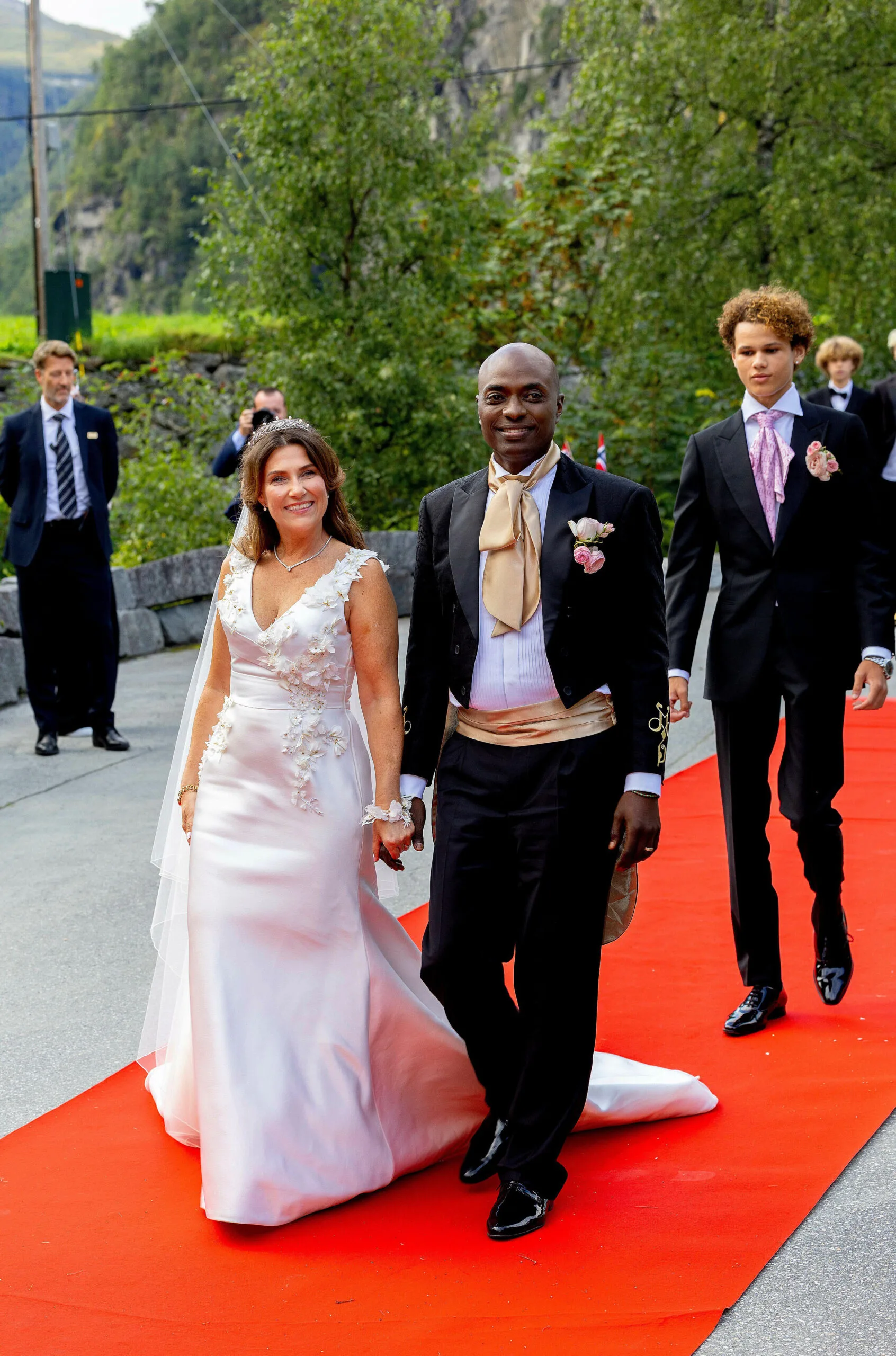
Managing scandal
The greatest challenge facing the future Queen Ingrid’s kingdom is a scandal that broke last year when her half-brother, Marius Borg Høiby, was arrested on suspicion of rape.
Marius has no royal title or official duties but grew up in the palace with Princess Ingrid. Norwegian reporter Caroline Vagle said the arrest was the biggest crisis the monarchy had experienced since 1905.
Scandals surrounding the monarchy in the Netherlands are far more benign than blood feuds, bribes and conman in-laws. Nevertheless, King Willem-Alexander has demonstrated poor judgment on more than one occasion, buying a holiday house in Mozambique under shady circumstances and taking a vacation during lockdown. The Princess of Orange has more nous than her father. In 2021, the year she turned 18, Catharina-Amalia turned down her annual royal allowance.
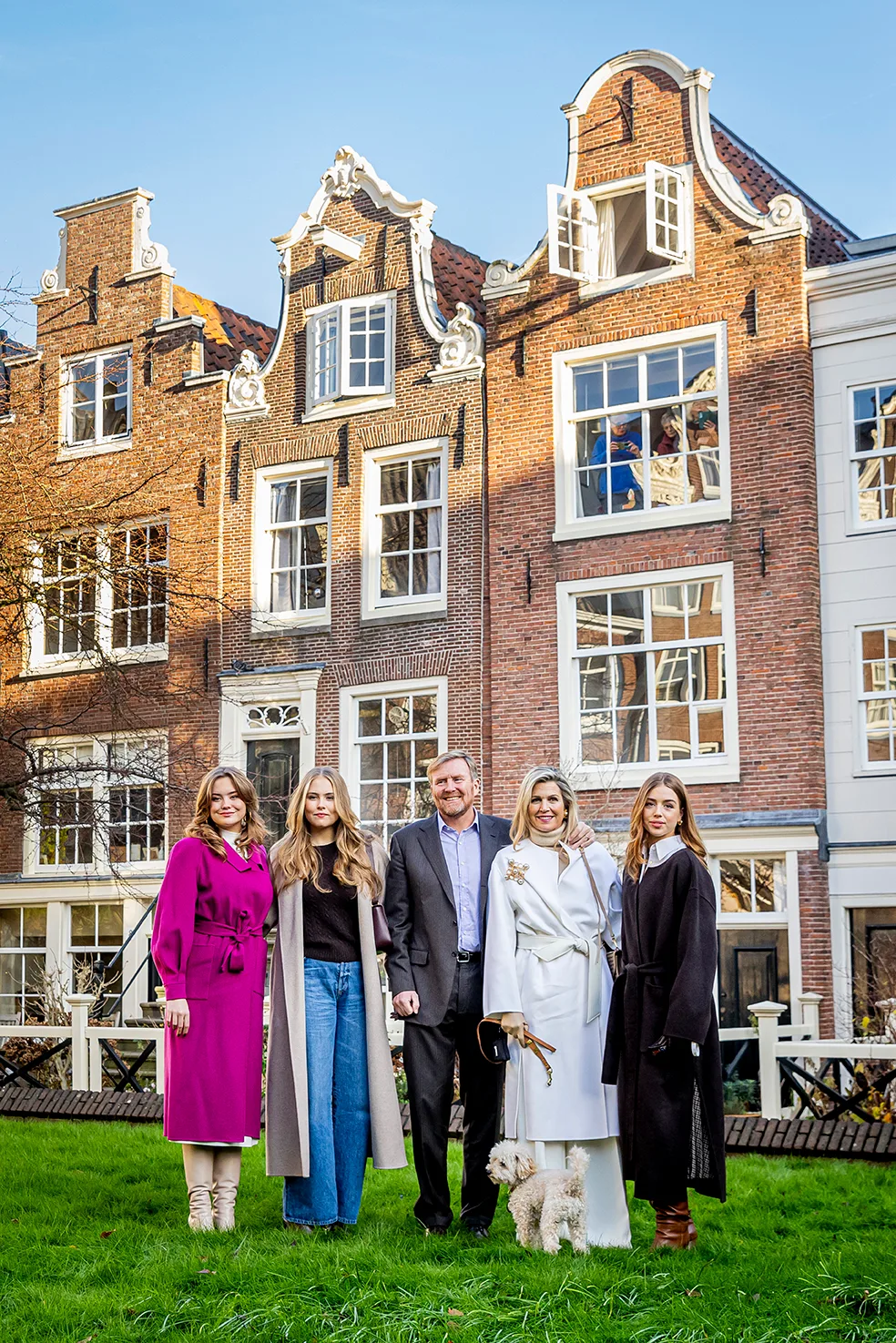
“I find the money uncomfortable as long as I do not do anything for it in return,” she said. She will refuse the payment until she is an active crown princess. She has had the hardest time at the hands of the gossip press.
“In the past there were a lot of bad comments about her because of her weight and figure,” Wim says.
In December, just after she turned 21, a slimmed-down Princess Catharina-Amalia attended a state dinner in a sparkling, cornflower blue gown and her mother’s Dutch Star wedding tiara. “Now the criticism is that she’s too skinny. I don’t understand it. People are very rude about her,” Wim says.
Mother figures
All four princesses were raised by mothers who held normal jobs before becoming queen. Belgium’s Queen Mathilde worked as a speech therapist. The Netherlands’ Máxima Zorreguieta was an executive at Deutsche Bank in New York. Letizia Ortiz, now Queen of Spain, was a broadcast journalist. Before she became wife to the heir of the throne of Norway, Crown Princess Mette-Marit was a waitress.
The princesses will not pursue careers. They will graduate from university into life as working royals and queens-in-training. In Belgium, for example, Princess Elisabeth will lead Belgian trade missions abroad. “She will be educated to become a good queen,” Wim says.
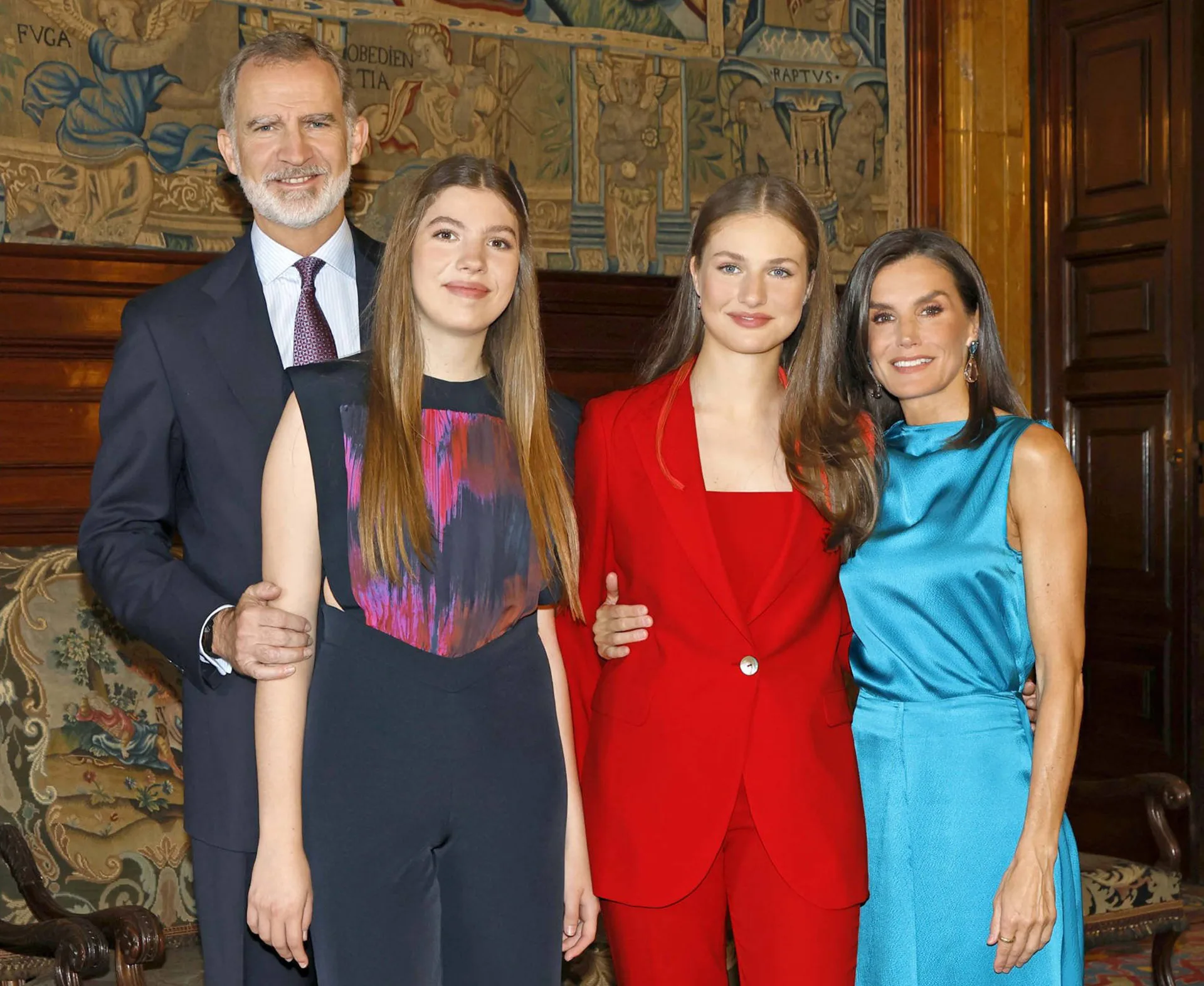
Their other chief role will be to find a suitable partner, and “secure the monarchy” with heirs, he says. “Choosing the right partner, it’s important.”
Even though many royals marry commoners, he believes that, in Belgium, there will be an expectation that Princess Elisabeth marries someone with blue blood. “That he is an aristocrat or part of another royal family,” Wim says.
“Our king, when he was young and cool, he was in love with a young girl … the only problem was she had not blue blood. His family asked him not to have a relationship with her. I think the Belgian king will realise his daughter has to be happy so he’ll not ask her to break up with a commoner. But it’s still an advantage if the partner has blue blood,” Wim says. “Some colleagues believe also that he’ll have to do a medical test to show he can father the next heir to the throne.”
Political leaders have also addressed the question of same-sex royal unions. “In The Netherlands and Belgium, the Prime Minister has already declared if they are lesbian they can stay queen. But it’s difficult because when you marry a woman, and you get children, how do you recognise those children? It starts a problem for the line of succession.”

Modern rulers
This is just one question for the future queens who will lead ancient institutions in modern worlds. “In the past, former crown princes who would be kings now had their own informal network club as well,” Wim reveals. “Once or twice a year all those crown prince couples came together to discuss how can you handle the media attention? How can you raise your children in a golden cage? It’s not a new thing, the contact between the heirs to the throne.
“Amalia said, ‘It’s a good thing that I can chat with Elisabeth and Ingrid-Alexandra about very simple things in our life which are difficult, different for us, friendships, privacy, social media. We discuss how we handle it’.”
This article originally appeared in the July 2025 issue of The Australian Women’s Weekly. SUBSCRIBE so you never miss an issue!
